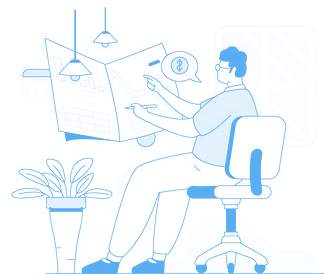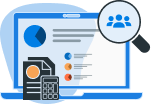What is a Job Role?
A job role refers to the specific position an employee holds within a company. It defines the tasks, responsibilities, and skills required for the role. Each job role contributes to the organization’s overall success by ensuring that employees understand their functions and work efficiently.
For example, a Marketing Manager is responsible for creating and executing marketing strategies, managing campaigns, and analyzing consumer trends. On the other hand, a Software Developer writes code, tests applications, and ensures software quality.
In short, job roles are the foundation of any organization, helping employees understand what is expected of them.
The Importance of Defining Job Roles
When job roles are clearly defined, they serve as a foundation for nearly every aspect of HR management. From recruitment to performance management , job roles play a key role in shaping an organization’s culture and success. Let’s break down why defining job roles is so important:
1. Helps in Recruitment & Hiring
When hiring, HR professionals need to identify the skills, experience, and qualifications required for a job. A clear job role helps attract the right candidates and speeds up the recruitment process.
2. Improves Employee Performance
Employees perform better when they know their responsibilities. A well-defined role minimizes confusion and boosts productivity.
3. Enhances Employee Satisfaction
Ambiguity in job roles can lead to frustration. Employees are more engaged when they have a clear understanding of their duties and career progression.
4. Ensures Organizational Efficiency
When each employee knows their role, the company operates smoothly. It reduces redundancy and increases overall efficiency.
5. Supports Performance Evaluation
HR teams rely on job roles to measure employee performance. It becomes easier to set Key Performance Indicators (KPIs) and track progress.
Difference Between Job Role and Job Title
| Aspect | Job Role | Job Title |
|---|---|---|
| Definition | The set of responsibilities and duties assigned to an employee. | The name or designation given to a position. |
| Example | Handling social media, content creation, and marketing campaigns. | Social Media Manager, Content Strategist. |
| Scope | Broad and defines what an employee does. | Specific and refers to the name of the position. |
Defining a job role might seem simple, but it involves more than just listing duties. Let’s take a step-by-step look at how to define a job role that benefits both employees and the organization.
1. Identify Core Responsibilities
The first step is to identify the core responsibilities of the role. These are the primary tasks that an employee will perform daily. For example, a marketing manager might have responsibilities like managing campaigns, analyzing data, and overseeing brand strategy.
2. Specify Required Skills and Qualifications
Each job role requires a specific set of skills, experience, and education. Defining these requirements helps ensure that you attract the right candidates during recruitment. For example, a software developer role might require skills in coding languages such as Python, Java, or C++.
3. Set Performance Expectations
Performance expectations help define how success in a role will be measured. Whether it’s meeting sales targets or ensuring customer satisfaction, these metrics give employees a clear goal to work towards.
4. Create a Job Description
Once you’ve identified the core responsibilities, required skills, and performance expectations, it’s time to create a comprehensive job description . This document will serve as a guide for both the employee and the employer and should be regularly updated as job roles evolve.
Types of Job Roles in an Organization
Every organization consists of various job roles that come together to achieve the company’s goals. These roles can be broadly categorized into several types:
1. Leadership Roles
Leadership roles include positions such as CEO, manager, director, and supervisor. These individuals are responsible for guiding teams, making strategic decisions, and ensuring the company meets its objectives.
2. Technical Roles
Technical roles are critical in industries like IT, engineering, and healthcare. These roles require specialized knowledge and skills to perform complex tasks. For example, software developers, engineers, and healthcare professionals fall into this category.
3. Administrative Roles
Administrative roles involve handling day-to-day operations, like scheduling meetings , managing communications, and supporting other departments. Administrative assistants, office managers, and HR assistants are examples of this type of role.
4. Support Roles
Support roles include customer service representatives, technical support staff, and other positions that focus on assisting customers or internal teams to resolve issues and improve efficiency.
Best Practices for Structuring Job Roles
Effective HR management requires structuring job roles in a way that supports organizational goals and enhances employee performance. Here are some best practices to keep in mind when structuring job roles:
1. Keep Roles Aligned with Organizational Goals
Every job role should align with the broader goals of the company. This alignment ensures that each employee understands how their work contributes to the company’s success.
2. Regularly Review and Update Roles
Job roles are not static. As technology, industry trends, and business goals evolve, job roles must adapt too. HR teams should regularly review and update job roles to keep them relevant and effective.
3. Ensure Flexibility in Roles
While it’s important to define clear roles, flexibility is also key. Allowing employees to take on new responsibilities or develop new skills can help with employee engagement and growth.
4. Foster Collaboration Across Roles
Job roles should promote collaboration across different departments. Cross-functional teams that bring together people with various skill sets can drive innovation and problem-solving within an organization.
Common Mistakes HR Should Avoid When Defining Job Roles
While defining job roles, HR professionals should steer clear of these mistakes:
1. Being Too Vague
A job role should be clear and specific. Avoid using generic descriptions that leave room for misinterpretation.
2. Overloading Responsibilities
Adding too many responsibilities to a single role can lead to burnout and inefficiency.
3. Ignoring Employee Feedback
Employees often have insights into their roles. HR should consider their input to refine job descriptions.
4. Not Updating Job Roles
Roles change over time. HR must ensure that job descriptions evolve with business needs.
Challenges Occur in Defining Job Role
Defining job roles can be tricky, and HR professionals often face challenges along the way. Some of the most common obstacles include:
1. Overlapping Responsibilities
Sometimes, job roles may have overlapping responsibilities, leading to confusion about who is accountable for specific tasks. To avoid this, HR should work with team leaders to ensure that job roles are distinct and complementary.
2. Evolving Job Roles
As businesses grow and industries change, job roles must evolve. However, not all companies are proactive in adjusting roles to meet new demands. HR must stay ahead of these changes and make necessary updates to job descriptions.
3. Misalignment with Company Goals
If job roles are not aligned with the company’s goals, employees may feel disconnected from the organization’s mission. Regularly revisiting and aligning job roles ensures that all team members work toward the same objectives.
How to Manage Job Roles Effectively?
Managing job roles effectively is key to ensuring that employees are motivated, productive, and satisfied with their work. Here are some tips for effective job role management:
1. Regular Feedback and Performance Reviews
Job roles should be assessed through regular feedback and performance reviews . This helps HR understand if employees are meeting the expectations outlined in their roles and provides an opportunity for growth and improvement.
2. Use Technology to Streamline Processes
HR management software , like Qandle, can streamline the process of defining and managing job roles. By using technology, HR professionals can automate administrative tasks, track performance, and ensure job roles are up-to-date.
3. Encourage Continuous Learning and Development
Encourage employees to continuously develop new skills relevant to their job role. Whether through training programs, workshops, or self-directed learning, providing opportunities for growth keeps employees engaged and aligned with evolving job requirements.
Why Defining Job Roles is Crucial for Success?
Defining and managing job roles is essential for both organizational success and employee satisfaction. Clear roles lead to increased accountability, better recruitment, and improved organizational efficiency. By aligning job roles with company goals, regularly updating them, and providing opportunities for growth, HR professionals can create a motivated and high-performing workforce. Are you ready to optimize your organization’s job roles? Explore how Qandle’s HR management system can help you streamline job role definitions, track performance, and improve employee satisfaction.
Want to learn more about managing job roles effectively in your organization? Sign up for a free trial of Qandle’s HRMS software and start transforming your HR processes today!


 Back to Glossary
Back to Glossary